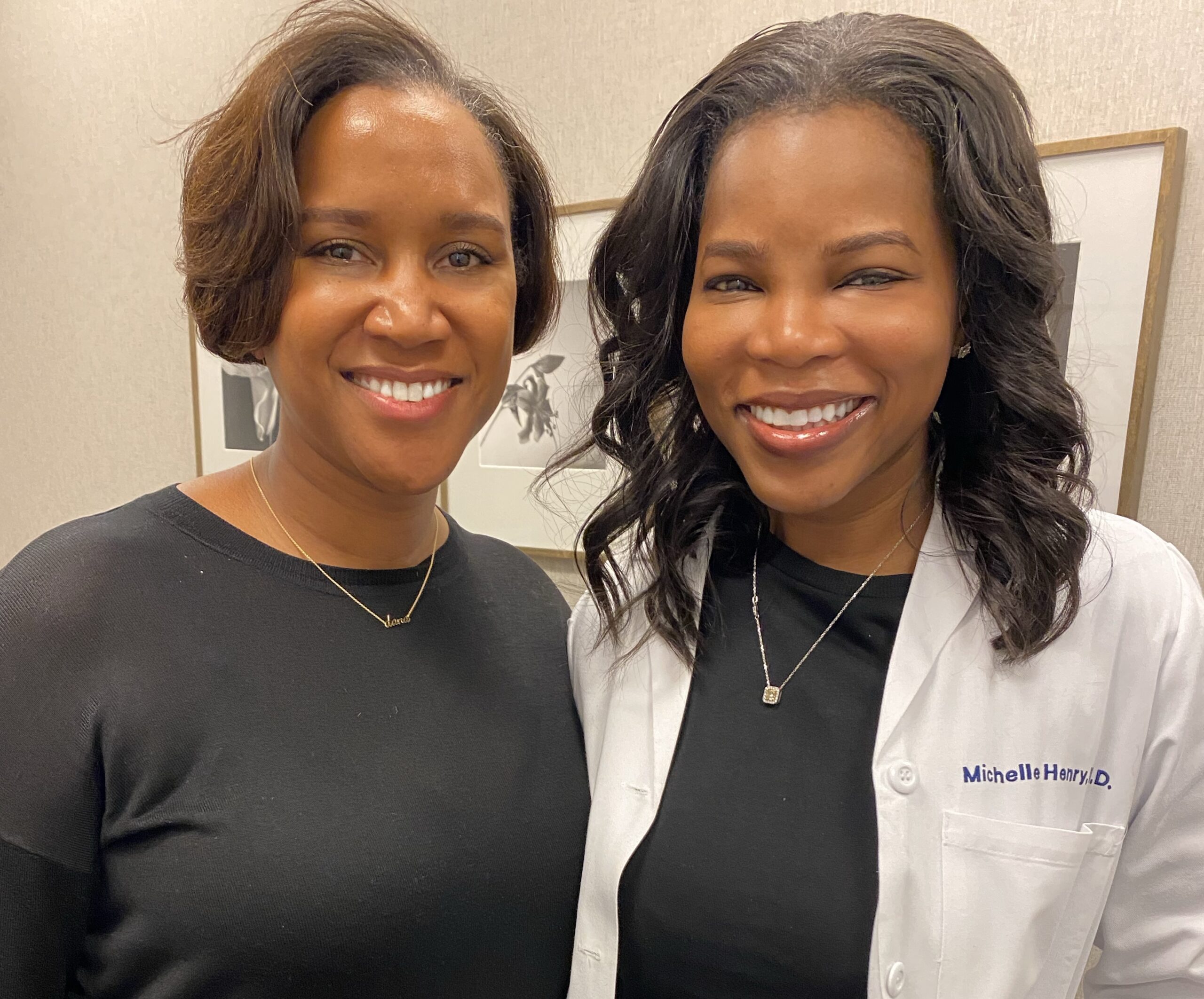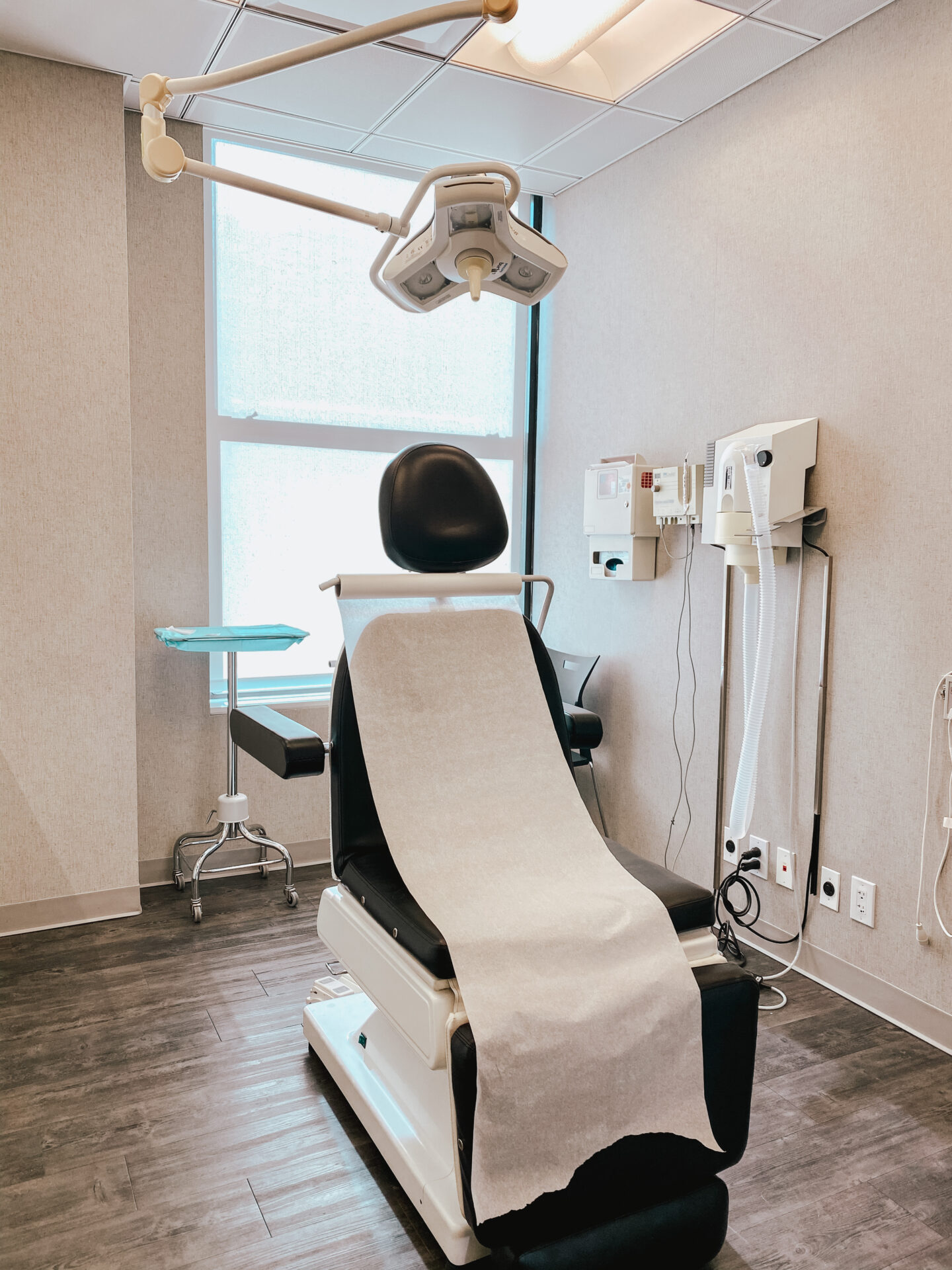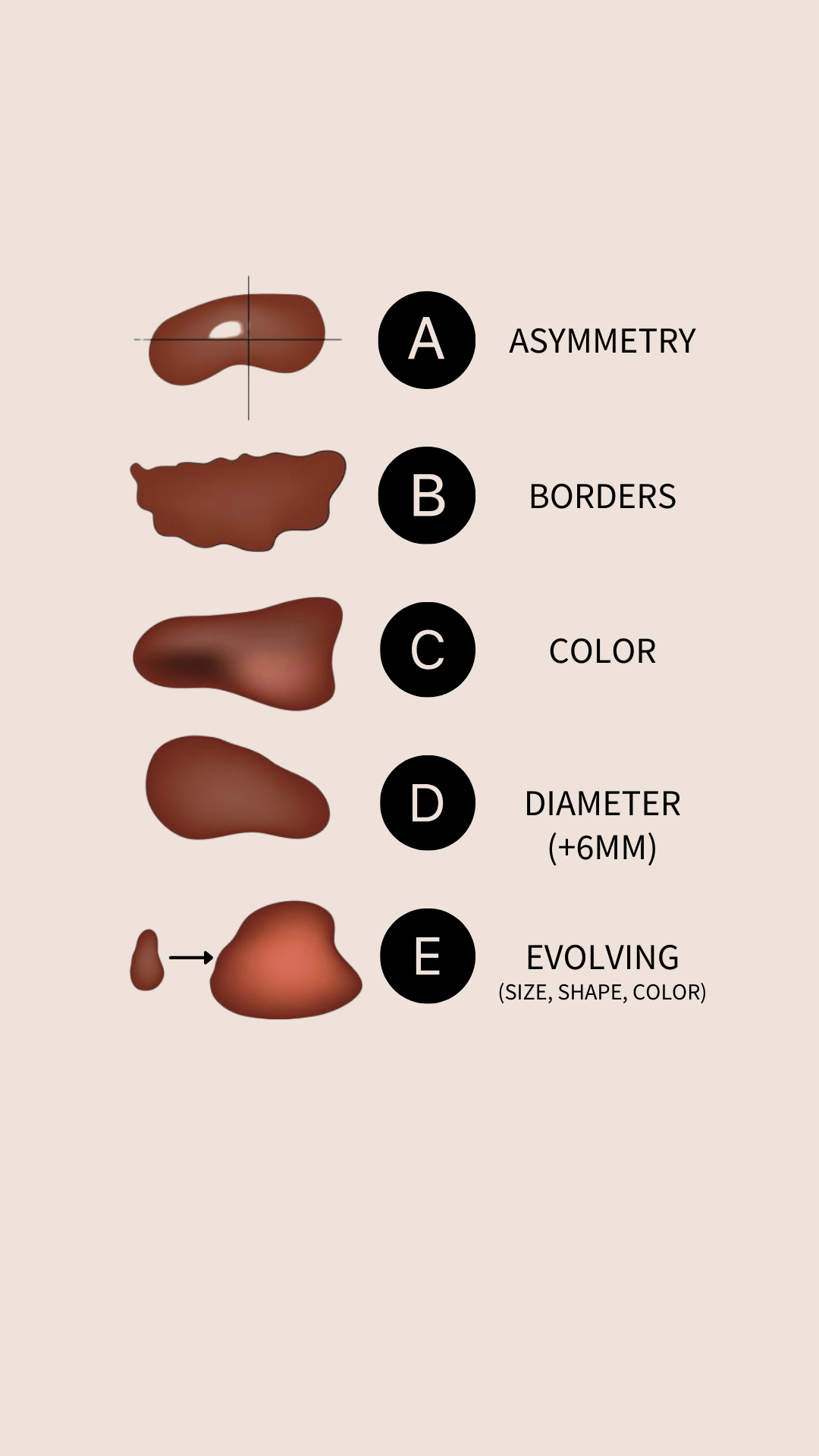Estimated reading time: 7 minutes

Did you know that about 33% of cancers diagnosed are skin cancer? And almost 3 million non-melanoma skin cancers and 132K melanoma skin cancers are diagnosed each year globally?*
Most skin cancers are treatable if caught early. That’s why it’s recommended to get a skin cancer screening annually, so you can help find cancer in its earlier stages when it’s easier to treat.
But, like many people, I have a slight aversion to doctor’s exams. So, I’m sharing my first skin cancer screening experience. And I’m breaking down:
- What a skin cancer screening is
- Why you should get a skin cancer check
- What to expect during a skin cancer screening
- How to check for skin cancer at home
So, what is a skin cancer screening?
A skin cancer screening is a visual exam of your skin, from your scalp to your toes. Your dermatologist looks at your entire body, unclothed, to check for any irregular moles and skin conditions.
Should you get checked for skin cancer?
Getting regular skin cancer screening can drastically improve your chances of detecting and treating skin cancer. The purpose of the exam is to help find cancer in its earlier stages.
In fact, the survival rate is exceptionally high if it’s discovered early. According to the American Cancer Society, the average survival rate of melanoma patients increased from 49% in 1950 to 91% today.
Regular skin cancer checks by a dermatologist can help detect abnormalities, including early signs of skin cancer before they become a problem.
My First Skin Cancer Screening Experience

After attending a Brilliance By Brown skincare and wellness event and hearing dermatologist Dr. Michelle Henry talk about the importance of getting a skin cancer screening, I scheduled an appointment.
For a snippet of the panel discussion, check out this video here: https://youtu.be/18rVZ0h4EyQ
The Exam
A month later, I arrived at Dr. Henry’s office for my appointment. Since it was my first time seeing her, I needed to complete my new client paperwork. This included informing her of my skin history, including any skin diagnoses (like my eczema), family history of skin cancer, and previous skin biopsies.

Then, I was guided to an exam room where I was asked to fully undress, except for my underwear, and put on a standard paper gown.
A few moments later, Dr. Henry entered the room, accompanied by a nurse. She has a kind and attentive nature. And what I love most is that she was very detailed, walking through precisely what she’s doing and why she’s doing it.
During the exam, she examined my skin using her naked eye and, at times, using a dermatoscope. A dermatoscope is a magnifying tool that can help differentiate benign (harmless) lesions from malignant (cancerous) ones.
She examined my face, including my lips, ears, and eyelids. She examined my abdomen, breast area, legs, butt, neck, and even between my toes and toenails. Then, she looked at my scalp by parting the hair all over. I have quite a few moles on my body, so Dr. Henry explained the ABCDEs of melanoma so I could understand what suspicious moles looked like.
So, what are the ABCDE’s of melanoma?

- Asymmetry (one half of the mole doesn’t match the other)
- Border irregularity
- Color that is not uniform
- Diameter greater than 6mm (about the size of a pencil eraser), and
- Evolution of size, shape, or color
Once she was done inspecting my moles and preparing me for my biopsy (which we will discuss in a moment), Dr. Henry left space for me to just ask questions about my skin. Of course, I asked quite a few questions about my eczema flare-ups and her diagnosis of contact dermatitis on my scalp.
When A Biopsy Is Needed
During my exam, Dr. Henry performed a biopsy after checking a mole on my left breast that looked suspicious. If there is any mole that the dermatologist thinks may be cancerous, they will do a biopsy.
I, of course, was alarmed by the news, but I obliged. A photograph of the mole was taken to document the appearance and the site. Then, the nurse gave me a local anesthetic. Less than a minute after giving me the local anesthetic, the area was numb. Then, Dr. Henry came back in and explained what type of biopsy I was receiving.
Dr. Henry performed what is called a shave biopsy. This is where she shaves off the mole using a small blade. Luckily, it didn’t really bleed, and I didn’t feel anything. (THANK GOD!) I was given a Band-Aid to put on the site while Dr. Henry placed my mole shaving in a labeled jar. The nurse also gave me ointment and Band-Aids to take home and re-apply over the area after showers.
Getting My Biopsy Results
I was told that it could take up to two weeks for the dermatologist’s office to receive results from the lab.
Some offices require that you return in 2-3 weeks to discuss your biopsy results, while others will call patients with any outcome, regardless of whether it’s benign or malignant. I was told that Dr. Henry’s office may only call if the biopsy came back as cancerous.
Of course, being the worrywart that I am, I called a few days later, and of course, they had not received the results back. I then called a few days after that. One week after the biopsy procedure, Dr. Henry’s office reached out. And luckily, my mole was benign!
My Overall Thoughts About My First Skin Cancer Check
Overall, it was a much-needed experience. When I initially scheduled this appointment, I expected an easy routine exam. I thought I would go in and document this experience without thinking there would need to be a further review on any aspect of my body. But, I am happy to know that I am skin cancer-free! It was a great learning lesson for me. And a lesson that will make me continue to get these exams annually.
Dr. Henry was excellent. She is very knowledgeable and walked me through every step of the process. And I really appreciate her checking on me to see if everything healed nicely afterward. She made me feel very comfortable, especially when I freaked out once I found out she wanted to biopsy my mole.
FYI: There was no scarring from the biopsy either.
How to check for skin cancer at home
It’s recommended to schedule a skin cancer screening once a year. But that doesn’t get you off the hook. It’s also important to check your skin regularly, about once a month. You should examine the skin all over your body, from head to toe. Ask a significant other, friend, or family member to look at areas you can’t see, like your scalp, ears, and back. And use the ABCDEs above for reference as to what you’re looking for.
So, when are you getting your skin cancer screening?
And what questions do you have about my experience? Put your questions down below, and I’ll answer them.
XOXO,
Dana
